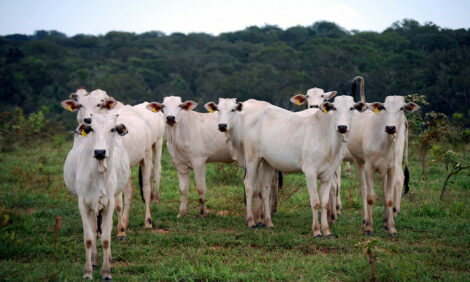



Despite Tough Economy US Beef Is Faring Well In Japan
US - Japan reinforced its position as a key trading partner for the US beef and pork industries in 2009, clearly outperforming the market and either maintaining or increasing US beef and pork imports even as total retail and foodservice spending in Japan slumped in the global economic slowdown.
In calendar year 2009, US pork sales in Japan – our top market for pork export value – nearly matched the all-time value record set one year ago ($1.54 billion verses $1.545 billion in 2008).
While that fact may not seem astonishing, consider that the global pork industry slumped 15 per cent in 2009 versus the year prior, and Japan’s supermarket sales dropped 4.3 per cent, reaching a 21-year low of 12.83 trillion yen (about $142.6 billion). At the same time, Japan’s foodservice sales dropped 1.5 per cent – the first decline in the past six years.
In this same environment, sales of US beef in Japan ended the year 23 per cent higher than the previous year in both volume and value while the global market for all beef exporters fell 16 per cent.
“Because of its strong currency and financial stability, there has been a tendency to think of Japan as an oasis in the global economic downturn,” said Philip Seng, president and CEO of the US Meat Export Federation (USMEF). “But make no mistake about it, Japan’s retail and food service sectors have faced serious challenges in recent months. One of the keys to growing market share for US beef and pork in this economic environment has been to meet these challenges with products that deliver tremendous versatility and value.”
US pork has gained traction with Japanese consumers preparing traditional winter dishes such as nabe (hot pot) and stewed pork favorites kakuni and nibuta. Through the end of February, USMEF is conducting major winter retail promotions showcasing US pork loin, belly and CT butt as featured ingredients in these popular dishes. Support for these promotions is provided by the Pork Checkoff and USDA’s Market Access Programme (MAP).
USMEF also emphasises the versatility of US beef for restaurants that want to attract price-conscious diners. Yakiniku (Korean barbecue) is one of the largest sectors of the Japanese foodservice industry with approximately 20,000 outlets across the country. To increase penetration for US beef in these popular restaurants, USMEF is promoting alternative beef cuts such as chuck rib, boneless short rib, chuck eye roll, brisket, outside skirt and tongue. With support from the Beef Checkoff and MAP, these cuts were recently featured by USMEF at the Yakiniku Business Fair in Tokyo, where many key buyers from Yakiniku restaurant chains were among the 13,000 attendees. USMEF demonstrated several new menu ideas at the event, including salted beef tartar, beef roll rice ball, beef and gelatin noodle salad and beef meat ball.
A strong presence in the processing sector is also critical to the success of US pork and beef in Japan, which is why USMEF maintains close relationships with the country’s leading processors and distributors. Nippon Ham, Japan’s largest meat distributor and sausage manufacturer, prominently featured US beef and pork at its mid-January product showcase in Tokyo and at six similar regional events. In late January, a wide range of US items were also promoted by Ito Ham, Japan’s second-largest meat distributor, during its product showcase. With support from the Beef Checkoff and Pork Checkoff programmes, USMEF provided point-of-sale materials for US beef and pork for each of these events.
The United States now holds 46 per cent of the imported pork market share in Japan (up steadily from 30 per cent in 2004) and 72 per cent of the chilled pork market. Since reentering the market after BSE, US beef market share is also on the rise. The US captured 20 per cent of the market in 2009, compared to just 10 per cent two years earlier.
“Japan will always be a destination for the finest cuts of US pork and beef,” said Mr Seng. “But obviously when you’re facing tough economic conditions, it’s important to feature products that appeal to a wide range of consumers. The US meat industry’s ability to deliver products of tremendous quality, value and versatility has been critical to the success we are seeing in Japan.”
TheCattleSite News Desk


